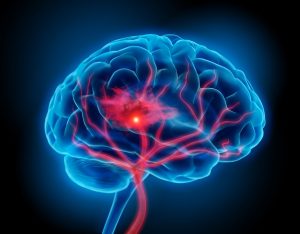 Knowing the signs of a stroke can save someone’s life. During a stroke, every minute counts. But acting fast can reduce the amount of brain damage that it can cause.
Knowing the signs of a stroke can save someone’s life. During a stroke, every minute counts. But acting fast can reduce the amount of brain damage that it can cause.
When you can act quickly and help a loved one get to a hospital, they will be able to get treated with a tissue plasminogen activator or tPA. This clot-busting drug can break up the blood clot causing the stroke. Evidence has shown that the sooner a stroke can be treated with tPA, the better the recovery.
Advertisement
By learning the FAST acronym, everyone can look out for the warning signs of a stroke. In fact, a study showed that the FAST acronym could help to identify up to 89% of all strokes. FAST stands for:
- Face drooping (usually on one side)
- Arm weakness (the arm may drift down or feel numb)
- Speech difficulty (slurred speech or trouble getting words out or understanding others)
- Time to call 911
Knowing these simple warning signs and what FAST stands for can make all the difference in stroke recovery and survival.
A Heart Attack in the Brain
In addition to learning the warning signs of a stroke, it’s also important to know how to lower the risk. The first thing that all doctors will recommend is staying on top of stroke risk factors such as high blood pressure, high cholesterol, and diabetes. Many people relate to a stroke by thinking of it as a heart attack in the brain. This helps them understand all the lifestyle changes that would be beneficial for lowering the risk of stroke, as they are very similar to heart attack prevention.
You can reduce the risk of stroke through lifestyle interventions. Diet and exercise are the most well-known ways to achieve better overall health, but some people don’t realize there is more to it than that.
Advertisement
For example, managing stress can help to keep blood pressure low. Managing atrial fibrillation is another way to reduce the risk of stroke. AFib is a common heart arrhythmia that causes blood clots, so managing the condition with a blood thinner is recommended.
For women, being mindful of estrogen should also be a top priority when trying to reduce the risk of stroke. For those of reproductive age who smoke, experience migraines, or who have a history of stroke, alternative forms of birth control should be discussed with a doctor.
By following a few simple lifestyle changes, the risk of stroke can be greatly reduced. By being an active participant in your health, you can help yourself and those around you if you notice any of the FAST signs or symptoms.
